Crystal Cove State Park
Introduction
Text-to-speech Audio
Crystal Cove State Park is renowned for being one of the last examples of natural seashore and open space remaining in Orange County. The park consists of more than 2,000 acres of wilderness and three miles of beach. The Crystal Cove Historic District covers 12.3 miles of the state park, and it is one of the few coastal cities in California that has retained much of its original character from the era of the Great Depression. Much of the construction in the Historic District dates back to the 1930s and is the last historical property of that type to still be standing in that area.
Images
Entrance to Crystal Cove State Park
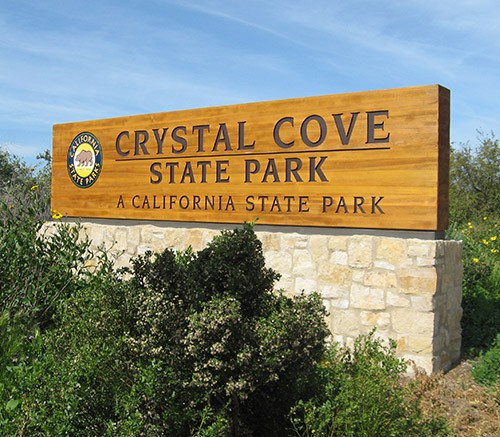
Cottages in the Historic District of Crystal Cove State Park, ca. 1940s
.jpg)
The Crystal Cove Historic District, ca. 1928
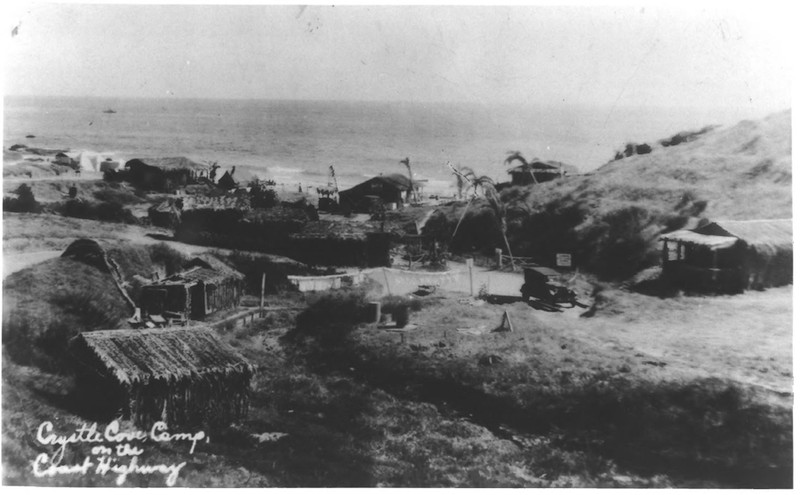
Aerial View of the Historic District
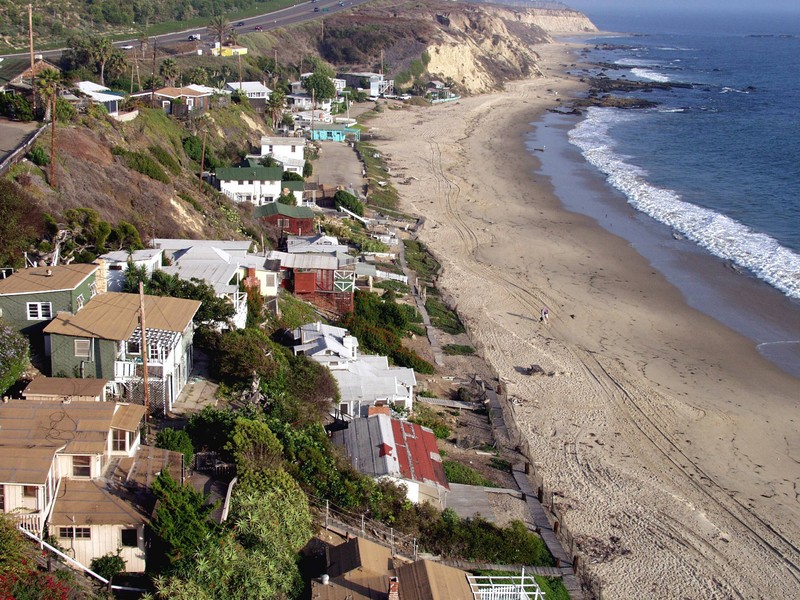
View from a Trail at Crystal Cove State Park
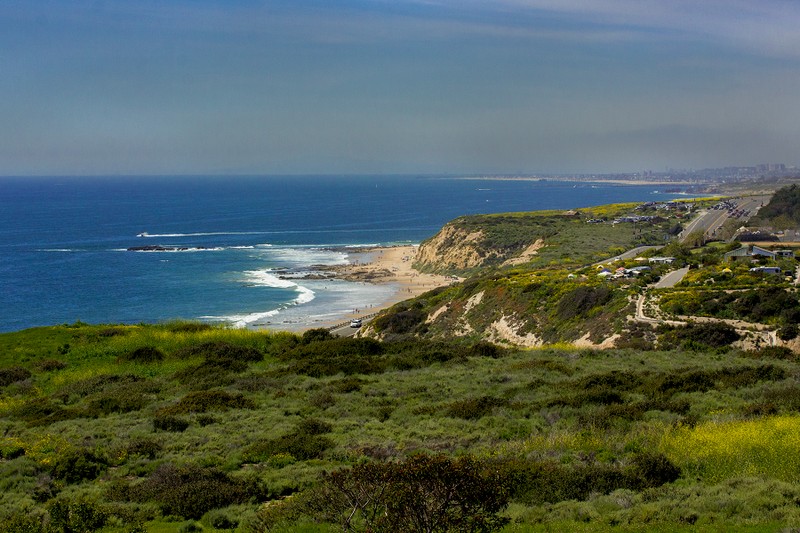
Cottage Number 13 in the Southern Crystal Cove Historic District Beach Area
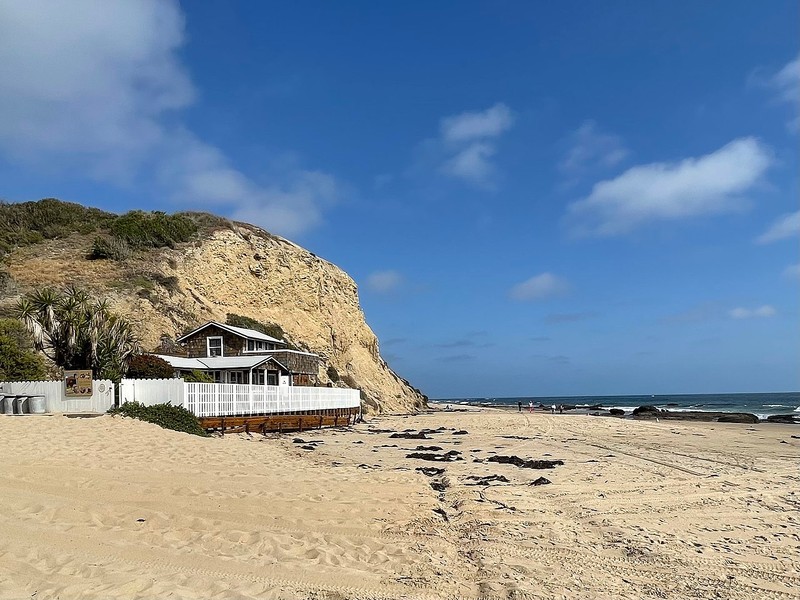
Backstory and Context
Text-to-speech Audio
Around 9,000 years before Spanish missionaries arrived on Southern California’s coast, the area was home to the Gabrielino and Juaneno tribes. Both were speakers of the Uto-Aztecan Shoshonean language and, as hunters and gathers, they wanted to establish their villages near reliable sources of water. Items such as fishhooks, stone implements, and nets were all created by members of these communities. The Gabrielino and Juaneno largely presided in domed circular structures and used wooden plank vessels known as tomols to reach the Channel Islands.
In the 1870s, James Irvine purchased the area that would become Crystal Cove from ranchers who owned a large portion of land in Southern California. His son, James Irvine II, became mesmerized by the area and invited his friends and family to construct bungalows there. Until 1927, the pristine location was known as the Irvine Ranch, but Elizabeth Wood produced the name “Crystal Cove.” During the 1920s and 1930s, Japanese farmers, who planted crops on surrounding hillsides, began to lease land. When the United States entered World War II in 1941, the military acquired property from the Irvine Ranch to use as coastal defense.
The Historic District at Crystal Cove State Park covers 12.3 acres and is recognized as one of the most visited sites in Southern California. It is one of the only remaining self-contained coastal recreational communities still intact. The area grew in popularity in the early 1900s, when it was a part of the Irvine Ranch, and people began to visit the remote area. In the years after World War I, as Hollywood began to boom, movie studios recognized the potential of the area and planted much of the vegetation that exists in the lush landscape.
In 1926, the Pacific Coast Highway connected Laguna Beach and Corona Del Mar, making Crystal Cove an even more popular tourist destination. Eventually, the area began attracting annual visitors and the small tents evolved into cottages and cabins. By the end of the 1930s, more than forty cottages were under annually renewed leases. Those who returned annually or rented seasonal tents made the idyllic area of Crystal Cove what it is today. In 1956, the El Moro Beach Trailer Park was established and became a permanent mobile home park.
In 1979, Crystal Cove became a California State Park, but in the early 1990s, the Historic District was under threat of becoming a luxury resort. As a result, the Crystal Cove Conservancy was founded to preserve and restore the cottages. The Crystal Cove Conservancy also launched STEM educational programs to instruct students and the public about conservation and the management of public spaces. They also offered the nationally recognized Marine Protected Area (MPA) Citizen Science Cruise, inviting middle and high school students to monitor Crystal Cove’s Marine Conservation Area.
Currently, twenty-nine of the cottages have been restored to reflect the historical period and seventeen are available to rent. The area that is the Education Commons and the visitor’s center houses artifacts and exhibits exploring the history of Crystal Cove. Historic Cottage #13 pays tribute to the cinematic history of the area, from the days of silent films to more modern movies filmed in Crystal Cove such as Beaches. The Historic District is situated alongside the coastal bluffs of the park and is straddling the Los Trancos Creek, and it is listed on both the National and California Registers of Historic Places.
Sources
Crystal Cove State Park, California Departments of Parks and Recreation. Accessed January 8th, 2024. https://www.parks.ca.gov/?page_id=644.
Orange, California State Parks Office of Historic Preservation. Accessed January 8th, 2024. https://ohp.parks.ca.gov/?page_id=21445.
Crystal Cove Cultural History, California State Parks. Accessed January 9th, 2024. https://www.crystalcovestatepark.org/cultural-history-test-page/.
About Crystal Cove, University of California Irvine. Accessed January 12th, 2024. https://faculty.sites.uci.edu/informalscience/history-of-crystal-cove-state-park/.
The history of Crystal Cove State Park, Wander Woman. August 9th, 2017. Accessed January 14th, 2024. https://wander-woman.blog/2017/08/09/crystal-cove-state-park/.
RJM Design Group
Crystal Cove Conservancy
National Park Services Gallery
Crystal Cove State Park
The Simple Hiker
Wikipedia
